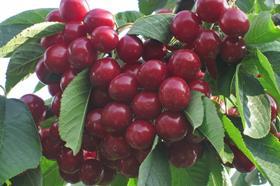
The Australian cherry industry has tried to make the most of a down season for yield and export but a new protocol allowing export to South Korea does provide some optimism.
Tom Eastlake, president of Cherry Growers Australia, said it had been a challenging season, with weather conditions varying.
“The crop and overall export looks to be significantly down this year and while reports of favourable prices abounded for much of the season, I’m fully aware of how this doesn’t always offset the reduced yields that some of us have seen,” Eastlake said in a newsletter.
As of 1 February 2020, 4,394 tonnes of Australian cherries were exported to 37 countries.
Of that volume 34 per cent was sent to China, meanwhile, Vietnam and Hong Kong both received 13 per cent Australia’s export volume. Eastlake said it was encouraging to see the industry still commit to export.
“Even in a lower crop year, it has been very pleasing to see export remain strong. It is the support of our export markets which allows our domestic market to flourish and supports our aspirations for improvements to our market access and the opening of new markets,” Eastlake said.
“It is only in demonstrating our willingness to support export markets that we are able to maintain our negotiation positions in foreign markets.”
One of the success stories of the season the announcement of a new treatment protocol between Australia and South Korea for the export of Australian cherries.
Fruit sourced outside of Tasmania must be fumigated prior to export. Cherries from Tasmania are not permitted to be fumigated prior to export.
Eastlake said this development was a great result for the industry even if it was not in place in time to allow trade for the 2019/20 season.
“The achievement of a new fumigation protocol for Australian cherries to South Korea is another success industry has been able to deliver off the back of the market access protocols signed for Vietnam and China in the last few years,” Eastlake said.



